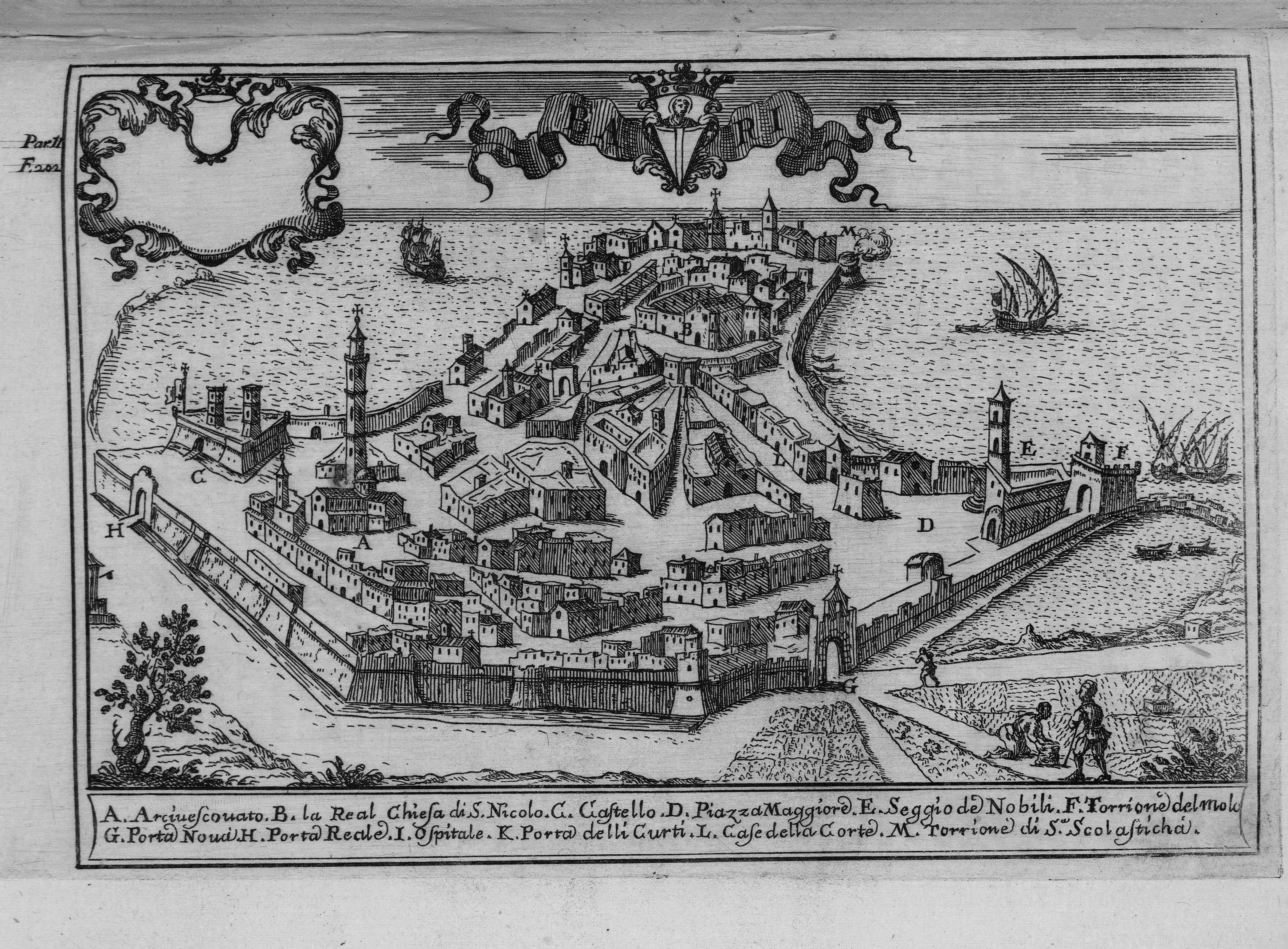
The city of Bari seems to be made up of two distinct and almost juxtaposed urban nuclei, to which a third was added in the second half of the twentieth century. Three cities in one, three different cultures, three different historical moments. Starting from the sea and heading towards the countryside, the old city, which was once surrounded by mighty walls, lies first on the natural peninsula.

Bari: drawing for Il Regno di Napoli in prospettiva, by G. B. Pacichelli, 1703, (image taken from Fondo Antiguo de la Biblioteca de la Universidad de Sevilla from Sevilla, España – “Bari”, CC BY 2.0, https://commons.wikimedia.org/w/index.php?curid=51281654)
With its plan that evokes the Mediterranean East, the historical center appears as a labyrinth of alleys and houses, one behind the other, enclosed within the two architectural and symbolic poles of the medieval city: the castle and the basilica. Between one pole and the other an almost 3000-year-long urban tale unfolds, which is made of streets, mosaics, churches, newsagents, confraternities, noble palaces, arches and courtyards that suddenly open around corners that to the traveler could seem blind.
Behind this “Old Bari” is juxtaposed the second city, the one known as the “Centro Murattiano”.
There is no real border: once the medieval walls were demolished, the two Bari met, without ever confusing or mixing. A single wide road – Corso Vittorio Emanuele – separates these two urban realities; after crossing it you leave the quasba and the Middle Ages behind you and you find yourself strolling in the Murat village, characterized by refined nineteenth-century plans. This latter Bari, which extends to the railway, has a simple parallelepiped shape, in which the streets are checkered. The perpendicular road axes have a South-North orientation. The sea in Bari is in the north; hence, going through the center, the traveller has the impression that all the roads stretch to the sea, to the horizon line, where the blue of the Adriatic Sea meets the sky. Conversely, he parallel roads have an East-West orientation.
Behind the Murat village the railway, which runs parallel to the sea, marks the beginning of the third Bari, the most modern and contemporary one, where refined residential districts and popular suburbs have proliferated. From here the city turns to the hinterland, almost thinning out towards the Apulian countryside.
Reference bibliography: F. Falagna, Bari città vetrina, in Viaggio in provincia, edited by E. Angiuli, Biblos Edizioni, Cittadella di Padova 1991, p. 406.